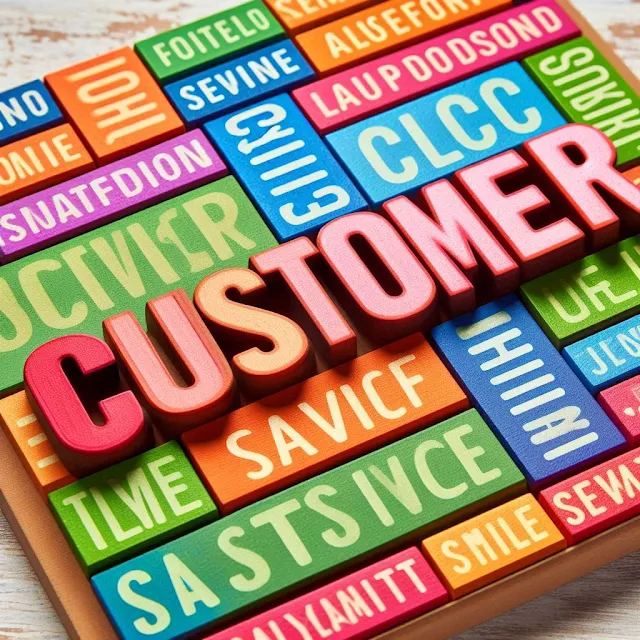Effective Customer Targeting: Strategies and Best Practices
Effective Customer Targeting: Strategies and Best Practices
Customer targeting is a crucial aspect of any successful business strategy. It involves identifying and reaching out to specific segments of a market to promote products or services. Effective customer targeting not only enhances marketing efficiency but also drives higher conversion rates and customer satisfaction. In this comprehensive guide, we will explore the key strategies and best practices for customer targeting, ensuring your approach is optimized for success.
1. Understand Your Market
The first step in effective customer targeting is understanding your market. This involves thorough market research to identify the needs, preferences, and behaviors of potential customers.
1.1. Market Segmentation: Divide your market into distinct segments based on demographic, geographic, psychographic, and behavioral factors. This helps in creating targeted marketing strategies for each segment.
1.2. Customer Personas: Develop detailed customer personas that represent your ideal customers. These personas should include information such as age, gender, income, interests, and buying behavior.
2. Analyze Customer Data
Analyzing customer data is essential for effective targeting. This data provides insights into customer behavior, preferences, and trends.
2.1. Data Collection: Collect data from various sources such as website analytics, social media, customer feedback, and purchase history.
2.2. Data Analysis Tools: Use data analysis tools and software to identify patterns and trends in customer behavior. Tools like Google Analytics, CRM systems, and data visualization platforms can be highly effective.
3. Define Clear Objectives
Having clear objectives is crucial for successful customer targeting. Your objectives should align with your overall business goals.
3.1. Specific Goals: Set specific, measurable goals such as increasing sales, improving customer retention, or enhancing brand awareness.
3.2. KPIs: Identify key performance indicators (KPIs) to measure the success of your customer targeting efforts. These could include metrics like conversion rates, click-through rates, and customer acquisition costs.
4. Develop Targeted Marketing Campaigns
Once you have a clear understanding of your market and objectives, it's time to develop targeted marketing campaigns.
4.1. Personalized Content: Create personalized content that resonates with each segment of your target audience. This could include tailored emails, social media posts, and advertisements.
4.2. Channel Selection: Choose the right marketing channels to reach your target audience. This could be social media, email marketing, search engine marketing, or traditional advertising.
5. Leverage Technology
Technology plays a significant role in customer targeting. Utilizing the right tools and platforms can enhance the effectiveness of your targeting efforts.
5.1. Marketing Automation: Implement marketing automation tools to streamline your campaigns and deliver personalized messages at scale.
5.2. Artificial Intelligence: Use AI and machine learning to analyze customer data and predict future behavior. This can help in creating more accurate and effective targeting strategies.
6. Implement Retargeting Strategies
Retargeting is an effective way to reach customers who have shown interest in your products or services but have not yet converted.
6.1. Retargeting Ads: Use retargeting ads to remind customers of their interest in your products. These ads can be displayed on social media, search engines, and other websites.
6.2. Email Retargeting: Send personalized emails to customers who have abandoned their shopping carts or browsed specific products on your website.
7. Monitor and Optimize
Continuous monitoring and optimization are essential for the success of your customer targeting efforts.
7.1. Performance Tracking: Regularly track the performance of your targeting campaigns using the identified KPIs.
7.2. A/B Testing: Conduct A/B testing to compare different versions of your campaigns and identify the most effective strategies.
8. Foster Customer Relationships
Building strong relationships with your customers can enhance the effectiveness of your targeting efforts.
8.1. Customer Engagement: Engage with your customers through social media, email newsletters, and other channels. Respond to their queries and feedback promptly.
8.2. Loyalty Programs: Implement loyalty programs to reward your customers for their repeat business. This can help in retaining existing customers and attracting new ones.
9. Adapt to Market Changes
The market is constantly evolving, and it's essential to adapt your targeting strategies accordingly.
9.1. Trend Analysis: Stay updated with the latest market trends and consumer preferences. This can help in adjusting your targeting strategies to meet changing demands.
9.2. Competitor Analysis: Monitor your competitors' targeting strategies and identify areas for improvement in your own approach.
10. Ethical Considerations
Ethical considerations are crucial in customer targeting. Ensure that your targeting efforts are transparent and respectful of customer privacy.
10.1. Data Privacy: Adhere to data privacy regulations such as GDPR and CCPA. Ensure that customer data is collected, stored, and used responsibly.
10.2. Transparency: Be transparent with your customers about how their data is being used. Provide clear information on your data collection and usage policies.
Conclusion
Effective customer targeting is a multifaceted process that requires a deep understanding of your market, data-driven insights, and the right technology. By following the strategies and best practices outlined in this guide, you can create targeted marketing campaigns that drive higher engagement, conversions, and customer satisfaction.





